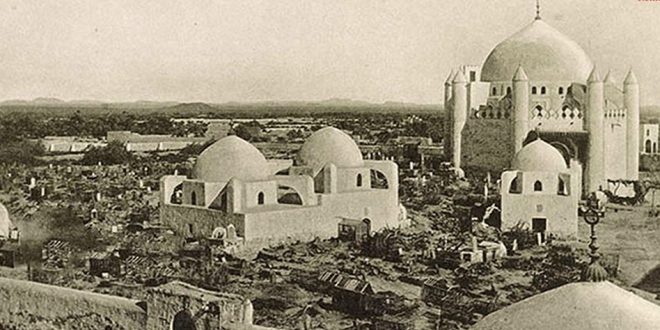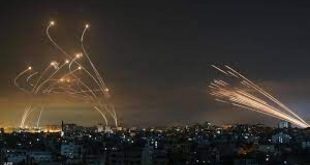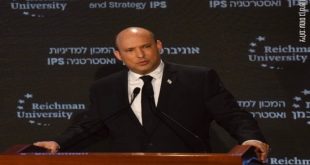Alwaght– Suppression of the Shiites in Saudi Arabia has always been on the agenda of the Al Saud regime and its security apparatus, with the ruling circle always trying to tighten its grasp on the media, apply censorship, and arrest the social activists in a bid to prevent the news from leaking to the outside world.
However, since emergence and development of the social media, there rose a serious challenge to the success of the regime-led censorship policy.
On Tuesday, Saudi media activist Adel al-Saeed broke the news about an enormous wave of arrest of Shiite clerics in the Shiite-majority town of Awamia in the Eastern Province in the recent weeks. He also disclosed Al Saud regime’s plan to demolish Imam Hussein Mosque in the town.
Commenting on the drivers behind the mosque demolition decision, al-Saeed said since the executed prominent Shiite Cleric Sheikh Nimr Baqir al-Nimr was the preacher of the Imam Hussein Mosque, it became symbolic to the Shiites of the country. “The Al Saud want to destroy any symbol associated with Sheikh Nimr”, he added. The Saudi regime executed the top cleric in January 2016, three years after holding him under detention and torture.
Dozen holy Shiite sites demolished in Saudi Arabia
Putting pressure on the Shiites of the country and destroying their holy places has been a policy long held by the ruling regime, not even limited to past century.
The Wahhabism power gain after the historic power distribution agreement between the Al Saud and Al Sheikh families in 1744 was a development that brought about pressure and crackdown to the Saudi society, specifically the Shiite minority east of the country. Under the accord, the Al Saudi secured an ideology to expand their realm and rule. In other words, the fundamentalist Wahhabi ideology turned into the driving force of house of Saud’s subjugations. Anybody not swearing allegiance to Wahhabism was either killed or displaced.
This trend elevated to new heights when the modern Saudi state was founded in 1933 and was meant to rewrite the country’s history based on the government-rated and approved religious and culture narration.
Since 1925, the regime destroyed about 98 percent of the religious and historical sites in the country. It razed to the ground many mosques, tombs, and shrines with historical religious, cultural significance in Mecca, Medina, Jeddah, Awamia, and Al Khobar. It also banned visits to shrines of Islamic historical figures with final goal being destruction of them under a Wahhabi-provided justification of the act of pilgrimage being polytheism. This justification gave permit to the regime to demolish non-Muslim, secular, Shiite, and even Sunni sites, something triggered outrage of Muslims inside the country and outside it. The destructions mainly targeted the Shiite sanctities.
In 1926, the ruling house of Saud reduced to rubles Moallah cemetery in Mecca and parts of Al-Baqi in Medina. Moallah cemetery dates back to the pre-Islam period and in the recent centuries was named Bani Hashim cemetery. Abd al-Mutalib, the grandfather of Prophet Muhammad, Abu Talib, the Prophet’s uncle, the Prophet’s wife Khadija bint Khuwaylid, and many Shiite clerics who died or were killed in Mecca are buried in this cemetery. Al-Baqi cemetery is home to graves of a number of the Shiite imams and companions of the Prophet (PBUH).
Demolition of the cultural sites with religious significance continued through to the late 20 century. In 1989, Saudi authorities exhumed the grave of the Prophet’s father Abdullah and destroyed the Prophet’s iconic home. According to investigations in Washington, with the growth of the construction in the mid-1990s in Mecca and Medina, 95 percent of thousands-years-old homes and buildings were removed.
Masjid Al-Haram expansion plan in 2011 was accompanied with removal of historical, cultural, and religious sites. One site was the house of Khadija. In 2014, the Saudi General Authority for Islamic Affairs and Endowments said that it registered 95 houses and 126 mosques destroyed before the end of the Masjid Al-Haram reconstruction. However, a January 2015 report released by the finance ministry revealed that over 10,000 houses were removed under the project.
The Saudi authorities constantly demolish the Shiite holy sites and mosques as part of a policy of systematic crackdown and torture, including destruction of the house of the first Shiite Imam Ali bin Abi Talib. They caused a big controversy in 2012 when they destroyed Imam Ali al-Aridhi Mosque in Medina, named after Imam Ali’s descendent.
Destruction of the mosques and Husseinyahs (praying halls named after Imam Hussein) of the Shiites in the absolutely-ruled kingdom who mainly inhabit in the eastern parts of the country pushes them to arrange their religious ceremonies in houses and private assemblies. The regime usually detains them for their religious gatherings.
The suppression machine the Al Saudi regime developed is severely tough on the Shiite cultural and religious activists who expose and criticize the brazen and systematic discrimination against this minority. Sheikh Nimr was an outspoken figure who, despite regime’s threats, made enlightenment in the face of the organized discriminatory anti-Shiite policies and massive suppression, drawing the ire of the authorities.
Now after years of his execution, demolition of Imam Hussein Mosque shows that the Saudi regime, afraid of eruption of public rage against its heinous crimes in Yemen and the normalization with the criminal Israeli regime, still regards Sheikh Nimr’s political legacy a big threat.
https://chat.whatsapp.com/Fava5Ifru8330dDMfhs0gn
 WILAYAH NEWS VOICE OF THE GLOBAL AWAKENING
WILAYAH NEWS VOICE OF THE GLOBAL AWAKENING






